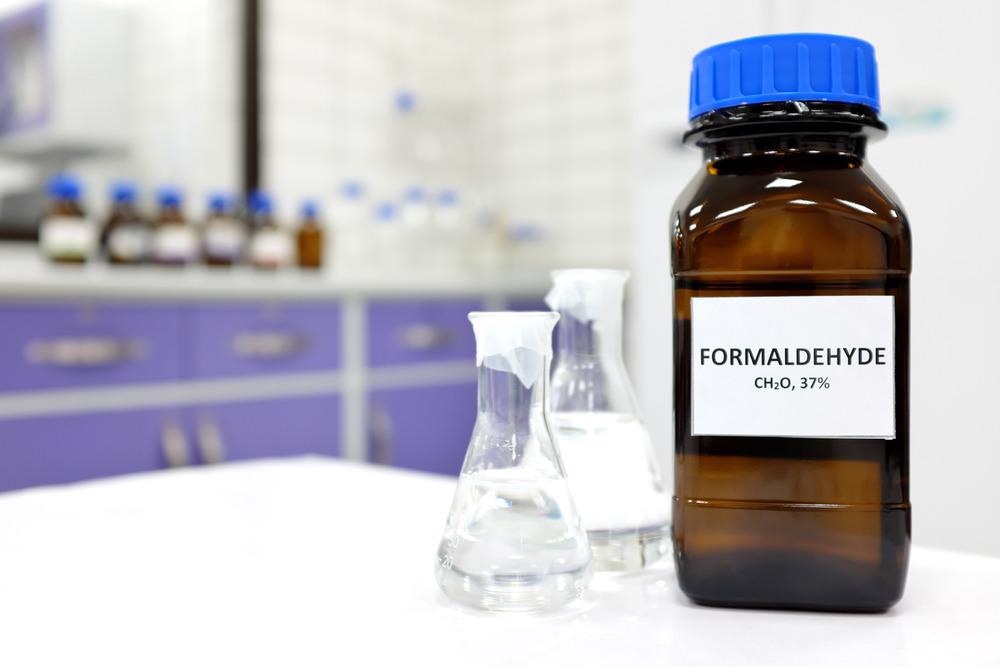In a study available as a pre-proof in the journal Materials Today Communications, first principle analyses were carried out for the adsorption of prevalent air contaminants and common volatile organic molecules on silicon-doped graphene.

Study: Highly selective formaldehyde sensor using silicon doped graphene: A theoretical study. Image Credit: sulit.photos/Shutterstock.com
The adsorptive intensity of formaldehyde molecules was revealed to be substantially greater than that of comparable gas species. According to the findings of this work, silicon-doped graphene has the prospects to be used in formaldehyde gas detection with great specificity and responsiveness.
The Problem of Formaldehyde Detection
Formaldehyde, being the most basic type of aldehyde, is widely used in a variety of chemical items in the industry, including furnishings, textiles, cosmetics, and automobiles. Since formaldehyde is extremely poisonous and is a known carcinogenic, its emission from industry items is a major source of worry for indoor air health.
It is critical that formaldehydes can be detected rapidly and precisely using gas sensor technology. Formaldehydes constantly coexist with a broad range of volatile organic compounds (VOCs), including alkynes, alkenes, alkanes, alcohol, and halo hydrocarbons, making distinguishing the formaldehyde-triggered sensory reaction from other VOCs challenging. As a result, it is required to increase HCHO detection specificity over other VOCs.
Graphene-based Sensing May be the Way Forward
Graphene has been extensively studied for its gas detecting capabilities ever since the earliest publications on graphene gas detection, owing to its high specific area, strong electrical conductance, and naturally small electric interference.
Chemically altered graphene may help to boost the capability of sensory technologies. Since metallic dopants have comparable chemical activities, sensory specificity remains a significant barrier for graphene-based gas detectors.
Graphene coated with silver nanoparticles (NPs) was confirmed in studies to be a viable sensory substance for the detection of H2S, NH3, NO2, and nitroaromatic chemicals. The low sensory specificity of Ag NPs adorned graphene, on the other hand, would be a disadvantage in practical uses.
Improving the Selectivity of Graphene-based Sensors
The key to attaining good specificity is to improve the adsorption of targeted gas molecules while weakening unwanted adsorptive dynamics. The formation of chemical bonding among the active site and the gaseous molecules is shown to be the specificity defining stage. As the frequently used ethene and acetylene may substantially disrupt the adsorptive interaction of the formaldehyde molecules on the sensory element, designing the X-modified graphene to have a stronger X-O linkage than the X-C linkage may be a viable strategy to shift the competitive behavior.
Si-O bonds have a higher bond breakdown energy than Si-C bonds. On the basis of this, silicon-doped graphene sensory devices should have higher HCHO gas specificity than graphene sensory devices with metallic doping.
Key Findings of the Study
In this study, the team established the higher specificity of silicon-doped graphene for HCHO detection on the basis of the design notion that strengthening the X-O link and weakening the X-C bond may modify the adsorptive intensity of gas molecules on the X-altered graphene surface.
By completing first-principles estimations on the adsorptive energies of prevalent airborne contaminants and common VOC molecules on the silicon-doped graphene platform, the adsorptive capacity of the HCHO molecule was determined to be the greatest across all gaseous molecules studied in this work. This suggests that nanoscale sensors built of silicon-doped graphene have high specificity for identifying HCHO.
Dual-probe sensory systems were constructed, and the electronic transportation characteristics were assessed using the non-equilibrium Green's function approach within the context of density functional theory. The highest returns along with the armchair and zigzag directions were 41.7 percent and 36.8 percent, respectively.
This study presents a design method for boosting target gas detection specificity as well as a conceptual foundation for investigating practical uses of graphene-based materials for highly selective gas detection.
Reference
Yang, L., Xiao, W., Wang, J., Li, X., & Wang, L. (2022). Highly selective formaldehyde sensor using silicon doped graphene: A theoretical study. Materials Today Communications. Available at: https://www.sciencedirect.com/science/article/pii/S2352492822003208?via%3Dihub
Disclaimer: The views expressed here are those of the author expressed in their private capacity and do not necessarily represent the views of AZoM.com Limited T/A AZoNetwork the owner and operator of this website. This disclaimer forms part of the Terms and conditions of use of this website.